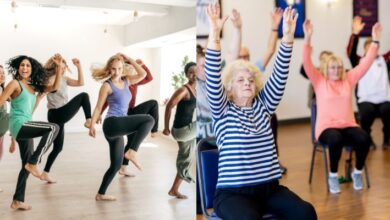Walking for good health

Walking is a simple yet highly effective form of exercise that can have numerous benefits for both physical and mental well-being. It is a low-impact activity that can be easily incorporated into daily routines, making it accessible to people of all ages and fitness levels. In this article, we will explore the various advantages of walking for good health and provide tips on how to maximize its benefits.
1. Introduction: The Power of Walking
Walking is a natural human movement that has been practiced for centuries. It requires no special equipment or training, making it an ideal exercise option for people looking to improve their health and well-being. Walking engages the entire body, from the muscles in your legs to the rhythmic movements of your arms, providing a holistic workout that is gentle on the joints.
2. Physical Benefits of Walking
Boosts Cardiovascular Health
Regular walking is a fantastic way to improve cardiovascular health. It increases your heart rate, improves blood circulation, and strengthens your heart muscles. Walking for just 30 minutes a day can lower the risk of heart disease, high blood pressure, and stroke.
Aids in Weight Management
Walking is a great form of exercise for weight management. It helps burn calories, making it easier to maintain a healthy weight or lose excess pounds. By walking briskly, you can intensify the calorie burn and improve your metabolism.
Strengthens Muscles and Bones
Walking is a weight-bearing exercise that helps build and maintain strong muscles and bones. It particularly benefits the lower body, including the calves, thighs, and glutes. Regular walking can reduce the risk of osteoporosis and improve overall bone density.
3. Mental Health Benefits of Walking
Reduces Stress and Anxiety
Walking in nature or even around your neighborhood can have a calming effect on the mind. It reduces stress hormones, such as cortisol, and stimulates the release of endorphins, which are natural mood boosters. Taking a walk outdoors can provide a welcome break from the demands of daily life and promote a sense of tranquility.
Enhances Mood and Mental Clarity
Engaging in physical activity like walking triggers the release of chemicals in the brain that enhance mood and mental clarity. It can help alleviate symptoms of depression and improve overall cognitive function. The rhythmic nature of walking can also be meditative, allowing for greater focus and concentration.
Promotes Better Sleep
Walking regularly can contribute to better sleep quality. It helps regulate the sleep-wake cycle and promotes relaxation, making it easier to fall asleep and stay asleep throughout the night. However, it is advisable to avoid vigorous walks close to bedtime, as it may increase alertness and make it harder to wind down.
4. Tips for Effective Walking
To maximize the benefits of walking, here are some useful tips to keep in mind:
Set Realistic Goals
Start with realistic goals that suit your current fitness level. Gradually increase the duration and intensity of your walks over time. Aim for at least 150 minutes of moderate-intensity walking per week.
Choose the Right Footwear
Invest in a pair of comfortable, supportive walking shoes to protect your feet and joints. The right footwear can enhance your walking experience and prevent injuries. Look for shoes that provide adequate cushioning and arch support.
Warm Up and Cool Down
Before starting your walk, spend a few minutes warming up your muscles with dynamic stretches. After your walk, cool down with static stretches to improve flexibility and reduce muscle soreness.
Vary Your Walking Routes
Exploring different routes can make your walking routine more enjoyable and prevent boredom. Seek out parks, trails, or scenic areas in your community. Varying your walking surfaces, such as grass, pavement, or sand, can also provide a different workout experience.
5. Walking for Specific Health Conditions
Walking can be beneficial for specific health conditions. Here are a few examples:
Walking for Diabetes Management
Regular walking can help regulate blood sugar levels and improve insulin sensitivity in individuals with diabetes. It aids in weight management and reduces the risk of complications associated with diabetes.
Walking for Joint Health
Contrary to popular belief, walking is gentle on the joints and can be beneficial for individuals with arthritis or joint pain. It helps lubricate the joints, reduces inflammation, and strengthens the surrounding muscles.
Walking for Aging Gracefully
As we age, it becomes increasingly important to stay active and maintain mobility. Walking is a low-impact exercise that can help seniors improve balance, coordination, and overall strength, reducing the risk of falls and age-related decline.
6. Incorporating Walking into Daily Life
Finding opportunities to incorporate walking into your daily life can make it a sustainable habit. Here are some ideas:
Walking for Commuting
If possible, consider walking or biking for shorter distances instead of relying on motorized transportation. It not only benefits your health but also reduces carbon emissions and contributes to a cleaner environment.
Walking during Breaks at Work
Instead of staying sedentary during your lunch break or coffee breaks, take a brisk walk. It can rejuvenate your mind, boost productivity, and help counteract the negative effects of prolonged sitting.
Walking with Family and Friends
Walking can be a social activity that brings people together. Invite your family members or friends to join you for a walk. It provides an opportunity to bond, engage in meaningful conversations, and support each other in achieving fitness goals.
Conclusion
Walking is a simple yet powerful activity that can greatly contribute to good health. It offers a wide range of physical and mental benefits, from boosting cardiovascular fitness and weight management to reducing stress and promoting better sleep. By incorporating walking into your daily routine and following some basic tips, you can enjoy its numerous advantages and improve your overall well-being.




